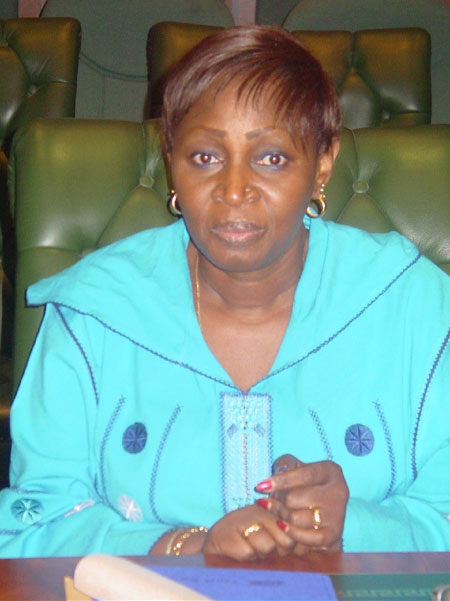
The minister of Forestry and the Environment, Hon. Fatou Gaye, recently opened a sub-regional experts meeting on harmonization strategy of the Great Green Wall for the Sahara and the Sahel Initiative.
The meeting, which drew participants within the sub-region, was held at Ocean Bay Hotel in Bakau Cape Point by the Government of The Gambia through the Ministry of Forestry and the Environment.
The meeting also brought representatives from the European Union, African Union Commission, and the Food and Agricultural Organisation, as well as officials from the Gambia Government Forestry.
In her official opening remarks, Minister Fatou Ndey-Gaye said The Gambia has been experiencing severe land degradation since the 60s and has joined the permanent interstate committee for drought control in the Sahel, with a view to not only benefiting from the experience of other countries, but also to sharing with them traditional and scientific knowledge gathered by Gambians in their common effort to manage their soil, water and forest for the benefit of current and future generation.
The Gambia advocated with the other African countries in 1992 to have a convention especially dedicated to desertification and drought control.
She stressed on the importance of the Great Green Wall, saying she would provide long-term response for an African partnership, supported by the international community, in meeting some of the objectives, which include natural resources conservation and development, strengthening infrastructures, especially in rural areas.
Therefore, the forestry minister encouraged the AU Commission and its partners to consider the Great Green Wall as a programmatic approach to sensitize development actors, especially policymakers on the specificities and the urgency in developing arid zones.
Speaking also at the forum, the FAO Country Representative in The Gambia, Dr Babagana Ahmadu, said the need for the harmonization strategy derives from the increasing number of initiatives in support to the implementation of the Great Green Wall for the Sahara and the Sahel Initiatives, as well as from the importance for all stakeholders to have a common and shared vision, enabling them to implement the Great Green Wall for the Sahara and the Sahel Initiative in a synergistic manner.
According to him, the FAO is engaged in the implementation of the Great Green Wall through two complementary projects, supporting the African Union omission and partner countries.
The first one is under its technical cooperation programme support for the mobilization of action to implement the Great Green Wall for the Sahara and Sahel Programme in five selected countries.
For his part, representatives from the AU Commission, Almami Dampha, said a lot has been achieved since the launching of this bold initiative by the AU with support from partners.
The concept of the Great Green Wall has taken roots in many of the countries of the Sahel and the Sahara.
Mr. Dampha asserted that the Great Green Wall initiative serves as a forum for like-minded development partners and practitioners to coordinate their efforts and resources in a manner conducive for addressing land degradation, desertification and promoting sustainable development and overall improvement of the livelihoods of the rural communities across the Sahara and the Sahel Zone of Africa.
Mr. Dampha said further that the strategy would serve as an indicative framework for the elaboration of national and regional trans-boundary plans for the implementation of the Green Wall for the Sahara Initiative.
Mr. Dampha concluded by especially thanking national experts and the representatives of the various regional institutions -ECOWAS, CILLS, OSS, ACMAD, AFF - for accepting the invitation to participate in the validation workshop.
In his statement, the representative from the EU, Jozias Blok, thanked the Gambia government, the AU Commission and the FAO for convening the expert meeting on the harmonization strategy of the Great Green Wall.
He noted that the EU support the African Great Green Wall Initiative because it addresses the root cause of land degradation and is clearly linked to poverty alleviation and climate adaptation in the long term.


